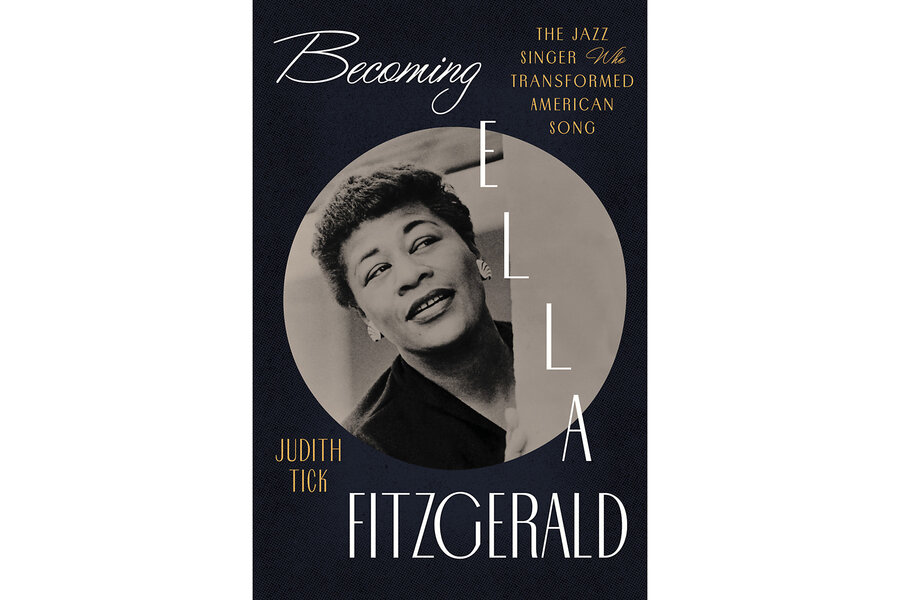A jazzy new biography unfurls Ella Fitzgerald’s life and career
Loading...
As an aspiring performer, a teenage Ella Fitzgerald competed in the famed Harlem Amateur Night at the Apollo Theater in New York. She had intended to dance, but when the act preceding hers was a dance number, Fitzgerald made a last-minute decision to sing instead. Visibly nervous, she initially drew ridicule from the audience. Pushing past her fear, Fitzgerald delivered a performance that helped launch her iconic career, which spanned the 20th century, shaped the American songbook, and established Fitzgerald as one of the preeminent singers of the modern era.
In “Becoming Ella Fitzgerald: The Jazz Singer Who Transformed American Song,” Judith Tick recounts the performer’s remarkable career and the impact it had on both the music scene and American society. A professor emerita of music history at Northeastern University, Tick blends her understanding of the era with recent interviews and newly accessible digital copies of Black-owned newspapers of the time.
Tick recounts the extraordinary resistance that Fitzgerald faced – and overcame. And while the young performer’s experience at the Apollo hinted at the professional success that would follow, Fitzgerald continued to defy personal and professional expectations.
Her success was by no means assured. Born in 1917, Fitzgerald grew up in one of the poorest sections of Yonkers, New York. By all accounts, she was a shy girl, although she aspired to be a dancer and would often sing for her friends. Local competitions provided her with early experience and exposure.
But it was her 1934 appearance at the Apollo that revealed another talent – Fitzgerald’s ability to connect with almost any audience. That skill graced her entire career and allowed her to expand beyond the class and racial restrictions of the day as she blazed new musical ground. She contributed to the development of bebop and blurred the line between jazz and pop music.
Tick describes how the contest at the Apollo caught the attention of Chick Webb, who invited Fitzgerald to join his band, a partnership that extended through the decade and anchored both of their careers. “Girl singers,” as Tick explains, were common during the era. Usually young and attractive, they would accompany big bands more as novelty acts than as vocalists. Down Beat magazine and other industry publications called these vocalists “decorative furniture,” as they casually referred to the women’s inferiority as musicians.
Against this sexist backdrop, Fitzgerald and Webb enjoyed an extraordinary collaboration. And when Webb died in 1939, Fitzgerald assumed the leadership of the band. In the decades that followed, her work with Ray Brown, Dizzy Gillespie, and Louis Armstrong continued to chart new paths. She and Armstrong shared top billing in a 1956 concert, a remarkable achievement for a female singer at the time.
Tick places Fitzgerald’s experiences in the context of each decade. Her research is enriched by access to Black-owned newspapers, including the Baltimore Afro-American and The Pittsburgh Courier. Comparing these press accounts with what was published in mainstream news outlets, Tick reveals how the very private Fitzgerald tended to be more candid with the Black press. For example, the singer voiced her dissatisfaction with the management of Decca Records.
Fitzgerald’s impact extended beyond music. Her growing success, and the press it garnered, stood in contrast to legally sanctioned segregation. “The more famous she became,” Tick writes, “the more she drew press attention when racial discrimination was involved.”
In one example, Pan American Airways bumped Fitzgerald from her first-class seat, putting her and her band in the back of the plane, a practice that echoed public buses at the time. While the airline was willing to reinstate her reservation, she refused when they would not also seat her band.
Fitzgerald accomplished all of this while largely keeping her personal life out of the tabloids. She kept the focus on her music as she further defied expectations, interpreting the American songbook, blending jazz with pop, and expanding the music – and its influence – across audiences of different races and social classes.
Judith Tick proves to be the astute biographer that Fitzgerald deserves.







